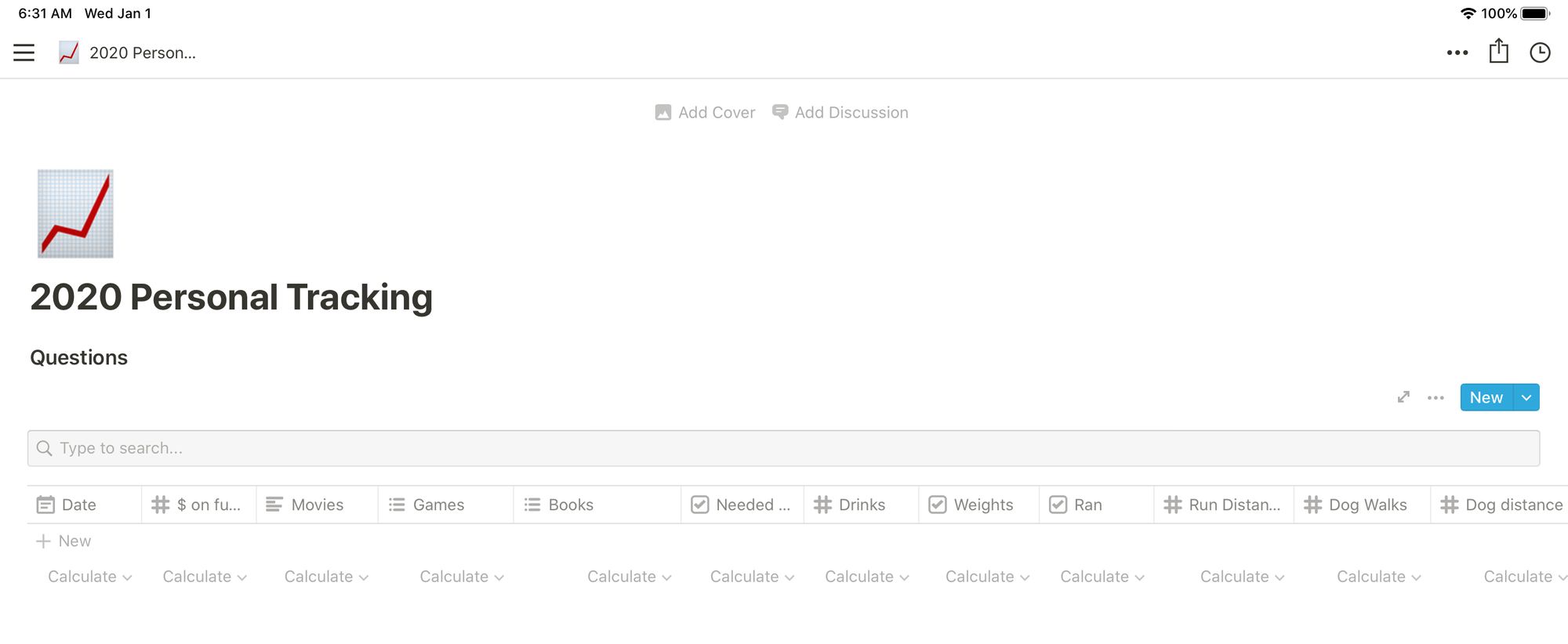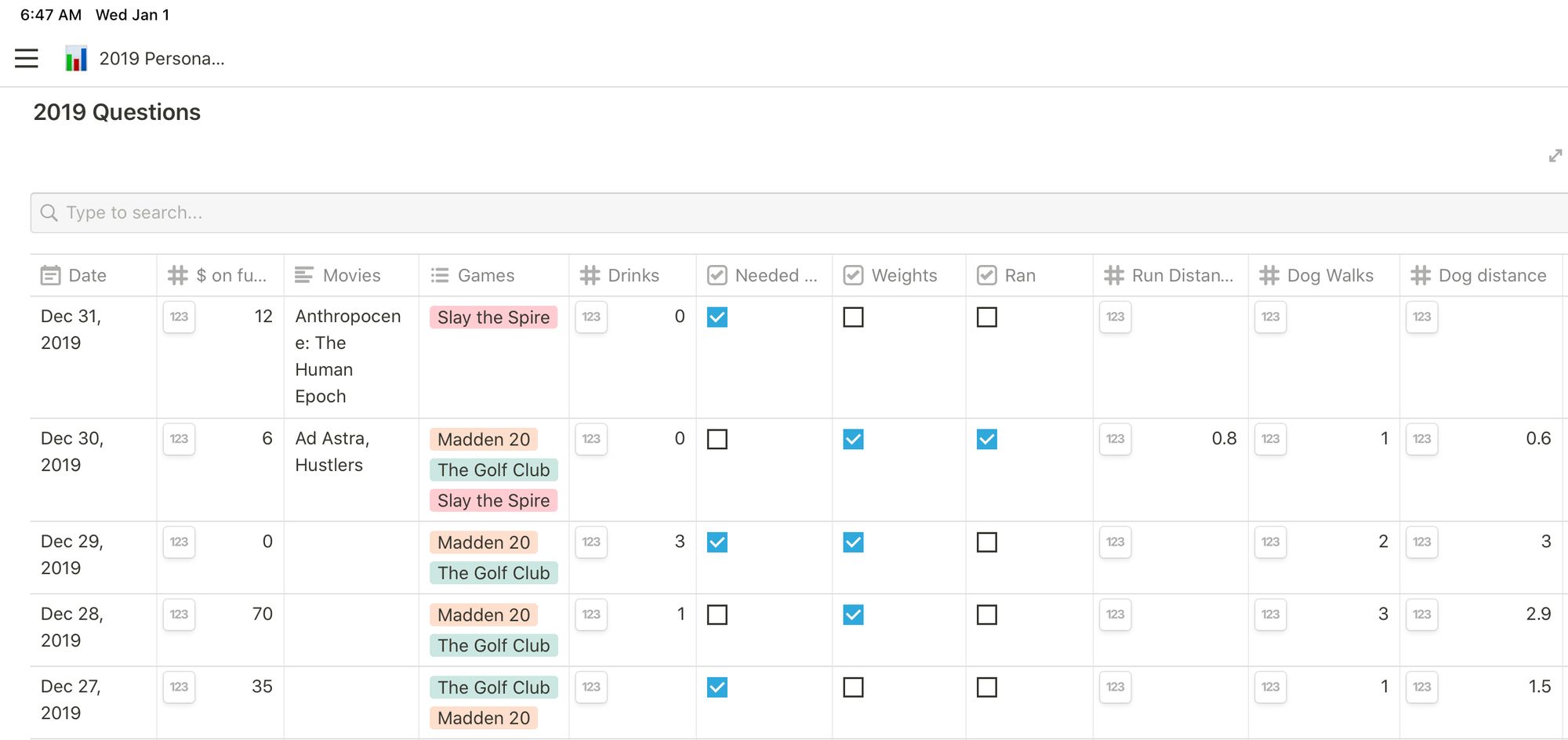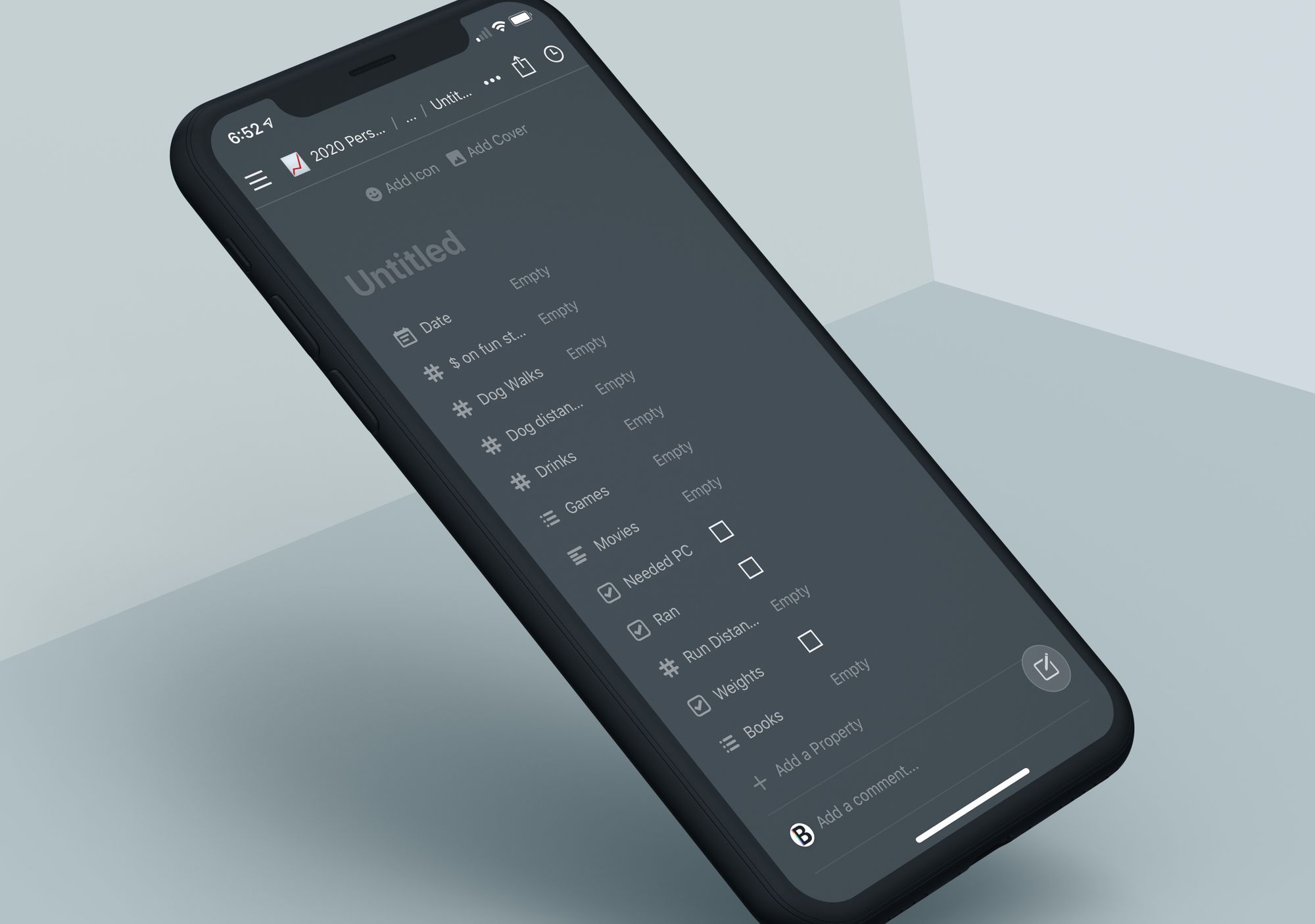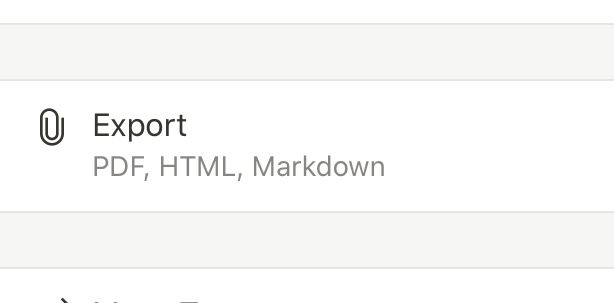How I’m Using Notion to Track my Life in 2020

I know articles and video on Notion are a dime a dozen, but after years of being totally befuddled by the service, I finally found something it works great for and wanted to share.
Context
In 2016 I tracked a bunch of aspects of my life, from weight to sleep time to what movies I was watching and more. I took 2017 off and got right back to it in 2018, tracking many of the same things. As you can guess, after taking 2019 off, I wanted to get back on the grind in 2020.
However, the last 2 times I did this I used the app Reporter for iOS to track everything. Reporter was literally built to do exactly this, but the app is pretty long in the tooth right now, feels pretty fragile and only works on my iPhone.
Enter Notion
I ended up just exporting my Reporter data as a CSV anyway, since I needed to do some manipulation to make sense of the data, so I considered Numbers, Excel, or Google Sheets to handle this, but they were not friendly at all for something I would be filling out everyday. Notion on the other hand happens to have a way to store things in a spreadsheet without making it feel like just a spreadsheet.
For one, Notion lets me set data types for each column, so I can ensure I enter a number in some columns and text in others, meanwhile yet others can be checkboxes, and there are tons of other options I haven’t used yet.
Also, since Notion is a web service and runs on basically anything, I can record my daily reports from an iPhone, Android device, iPad, or Mac, whichever is most convenient at the time.
My Notion Setup

I almost feel like this should be more dramatic, but this is it, folks. Actually, here it is with some test days recorded while I was figuring out if this would work for me:

It’s basically a spreadsheet but with some nice styling to make it easier to understand at a glance.
Oh, and here’s the data entry mode, which feels very much not like a spreadsheet.

What I’m Tracking
- Money spent on “fun stuff” (aka what did I spend on apps, movies, games, Starbucks, etc. that I didn’t need to today?)
- What movies did I watch?
- What video games did I play?
- What books did I read?
- Did I need to use my Mac for something my iPad couldn’t do?
- How many alcoholic drinks did I have?
- Did I do strength training today?
- Did I run today? How far were those runs?
- Did I walk the dog today? How far did we walk?
I can do all of these through new columns in this spreadsheet, and like I said earlier, Notion makes it pretty easy to format these so you are always entering the right data. I especially like the “Multi-Select” data type for things like games and books since they let you create “tokens” that you can use to easily fill out the same value over many days. For example, I like to play a game of Madden right after work, so instead of typing out “Madden 20” every time I fill out this report, I just tap on the “Madden 20” token I created previously. This is really nice for things that I do the same multiple days.
Entering Data
I have a recurring task set up in Things 3 that reminds me to report on my day. When I see this, I’ll open Notion and tap the “New” button at the top right of this page. This adds a new row at the top of the table I’ve created.
This brings up a page that feels more like a standard web form than a spreadsheet. I just go down the list and enter values for everything. It’s all saved immediately to the cloud and I can access the data wherever.
It is worth mentioning here that the iOS and Android experience is not as good as that of the desktop and web versions of Notion. You can’t easily tab from one field to the next and entering things like dates takes more taps than you might expect. But that said, I still do this from my iPhone most nights and it’s been good enough to get the job done.
Getting My Data Out of Notion
While Notion is great for entering this data and keeping it synced online, it doesn’t have anything in the way of graphing these numbers or anything like that. To that end, I needed to be able to get my data out of Notion and into a traditional spreadsheet so Numbers can make nice graphs for me.

Thankfully, Notion also makes this easy, as I can export this data as a CSV and then do what I want with it in my app of choice.
Another note about the iOS version: the iPhone app does not allow you to export, but the iPad, Android, Mac, and Windows versions do. I have no idea why, but again, it’s not a deal-breaker, just a weird omission. iPhones have the same Files app integration as iPads, after all.
Conclusion
Tracking this much information about yourself is not easy, and it’s not even fun for lots of people. For me, it lets me see my life in a more complete manner than I can if I just look back on things and guess how things are going or what I did. I invariably burn out on it by the end of each year doing it, but I really enjoy being able to look back on 2016 and 2018 and see a detailed view of what I did that year.
I’ve been trialing Notion to do this tracking for about 45 days and it’s worked well for me so far. There’s not much more to say now, but you’ll see the results this December when I dig through all this data and try to find the interesting bits.


